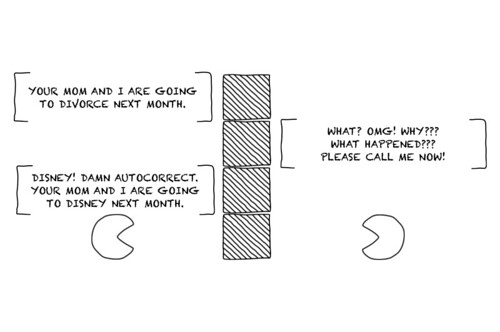In my last post, I forwarded that many people today are becoming hardwired for texting. I’ll touch on one aspect of this phenomenon: latency.
la⋅ten⋅cy - noun the time that elapses between a stimulus andthe response to it.
In face-to-face communication, we rely on centuries of language and customs, coached and reinforced from when we are very young.
Such exchanges share a common structure, but how we react to what is said depends on a number of non-verbal cues. Pitch, volume, how a person stands, proximity, passion, pacing… these all wrap around the content of what’s spoken that helps us derive some meaning.
When I’m among others at conferences who use their devices to tweet or take notes while people are imparting wisdom, the ability to share text messages with each other in a shared context provides a wonderfully reflective layer to an event and face-to-face conversations. I believe this is how people aspire to share with each other via social media, and why events like #lrnchat are successful.

When messages are only text, I shape their meaning by the words and the latency between our back-and-forth — it’s my context (and imagination) that fills in the details. When the time between text messages approaches REALTIME chat, context is clearer because the back-and-forth provides lots of opportunities to clarify — making sure everyone derives close to the same meaning.
The longer it takes someone to respond after I ask for follow-up to an ambiguous text message, the more likely I ascribe my own interpretation of a message. That’s when things can get funky.
Recall a freakout that happened to you because a text, tweet or email was mistyped, sent to the wrong person or worded poorly. Latency is important because the longer an exchange goes without follow-up, the more likely miscommunication occurs. Text messages aren’t just about the words you use — it’s also about the experience someone else has reading them.
This is why I posted about simulation in my last post. We have face-to-face communication which has evolved through millennia; and we have text messages, which simulate that such communication because of their accessibility and potential latency while lacking the same agency (our next vocabulary term).
Related posts:






Leave a Reply
You must be logged in to post a comment.